The 38th Edition of the Ball Blue Book Guide to Preserving was released on February 1st, 2024. Home canners are eager to know what’s changed in the new version, and I have the answers for you!
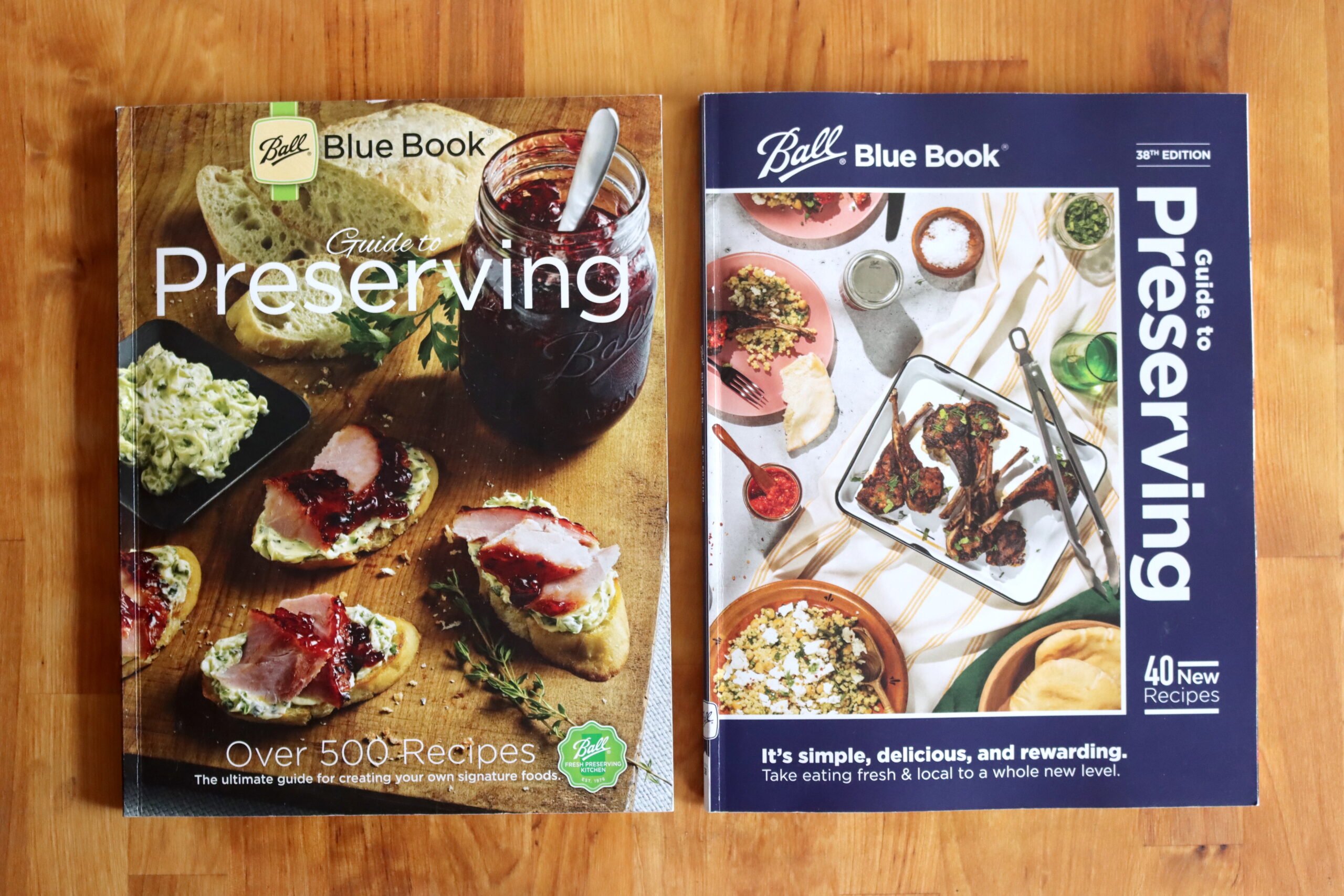
Ball Blue Book 37th (Left) and 38th (Right) Edition
Every time a new canning book edition comes out, it’s supposed to supersede the previous editions…but the authors rarely call out the actual changes.
I wanted to know how canning science has changed in the last 4 years, and what recipe updates they included in the new edition…so I went through both books side by side and compared every single recipe.
Though it’s been out a while, the book isn’t on Amazon or other book retailers (yet), and for now, they only have the 37th edition. It’s only available at select Walmart locations for now…leading to a lot of frustration from home canners who just can’t get their hands on a copy. (There are a few copies available on eBay at the moment, and at a decent price for now.)
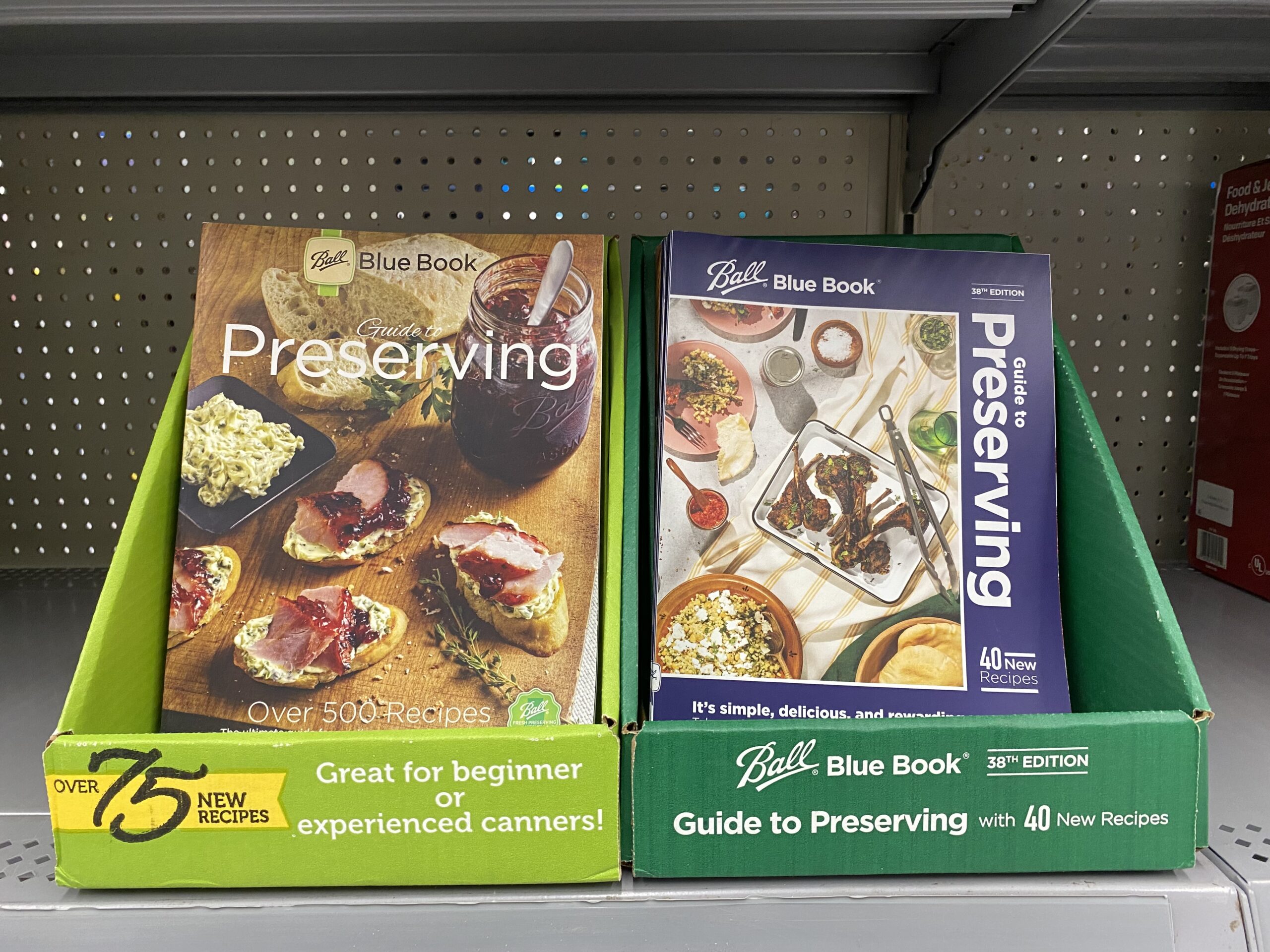
I found a huge stock of it, and I’m running a giveaway with ten copies of the new 38th edition of the Ball Blue Book on Creative Canning’s Substack.
If you can’t find a copy, be sure to enter, and I’ll select winners randomly on May 1st, 2024.
Here’s where you can enter the giveaway.
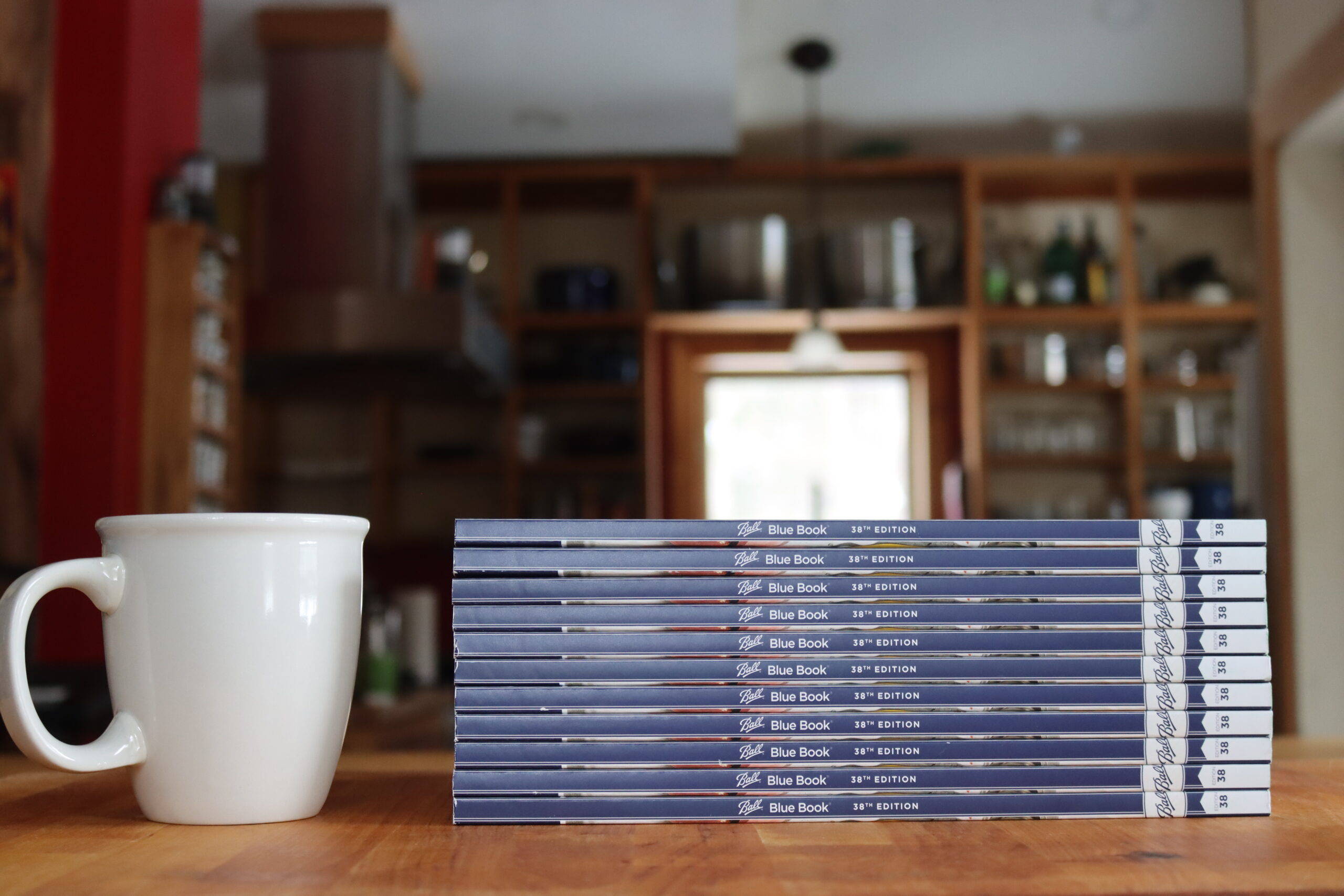
Ball Blue Books waiting on my coffee table for you to win.
Ball Blue Book History
Over the years, the Ball Blue Book has changed dramatically from the first edition in 1909, and there are new recipes and updated science with each edition. I’m particularly interested in canning history, so I happen to have a lot of the older editions in my collection.
If you’re curious about older editions, I’d encourage you to read my article on the History of the Ball Blue Book, which contains downloadable links to some of the older editions. (Including a copy of the hard-to-find first edition from 1909 and a 1926 edition, as well.)
For now, I’m just going to highlight the specific changes in the most recent edition. And I’ll also take you through a list of all the new recipes in this latest edition.

Historical Ball Blue Book Editions. Left to right, starting at top left: 1909 first edition, 1920’s Edition L, 1920’s Edition M, 1930 Edition O-2, 1938 Edition T-3, 1949 Edition Y, 1960 Edition 26C, 1969 Edition 28, 1972 Edition 29. I just love the history behind vintage canning books!
What’s Changed in the 38th Edition of the Ball Blue Book?
The 37th edition came out in 2014. Now, a decade later, in 2024, canning science has, in fact, changed for a few fruit varieties.
In the last few years, there have been new findings that more modern apple varieties (and apple growing techniques) can lead to apples that are less acidic. Apples used to be considered safe for canning without added acidity since they were generally well below the safe pH of 4.6 for water bath canning.
These days, they’re less acidic on average, and they’re inching closer to that 4.6 line. Out of an abundance of caution, the Ball Blue Book is now recommending adding bottled lemon juice when canning apples (or apple products like juice, cider, apple butter, jam, and sauce).
The same change happened a few years back with Tomatoes, which used to be considered safe for water bath canning…but new varieties and growing techniques are yielding less acidic (and sweeter) tomatoes.
For both tomatoes and apples, using old-fashioned heirloom varieties doesn’t always solve this issue, as it’s a combination of the variety and the growing techniques. Modern fertilizers change the nutritional content of fruits, as can modern growing methods like hydroponics and greenhouse culture.
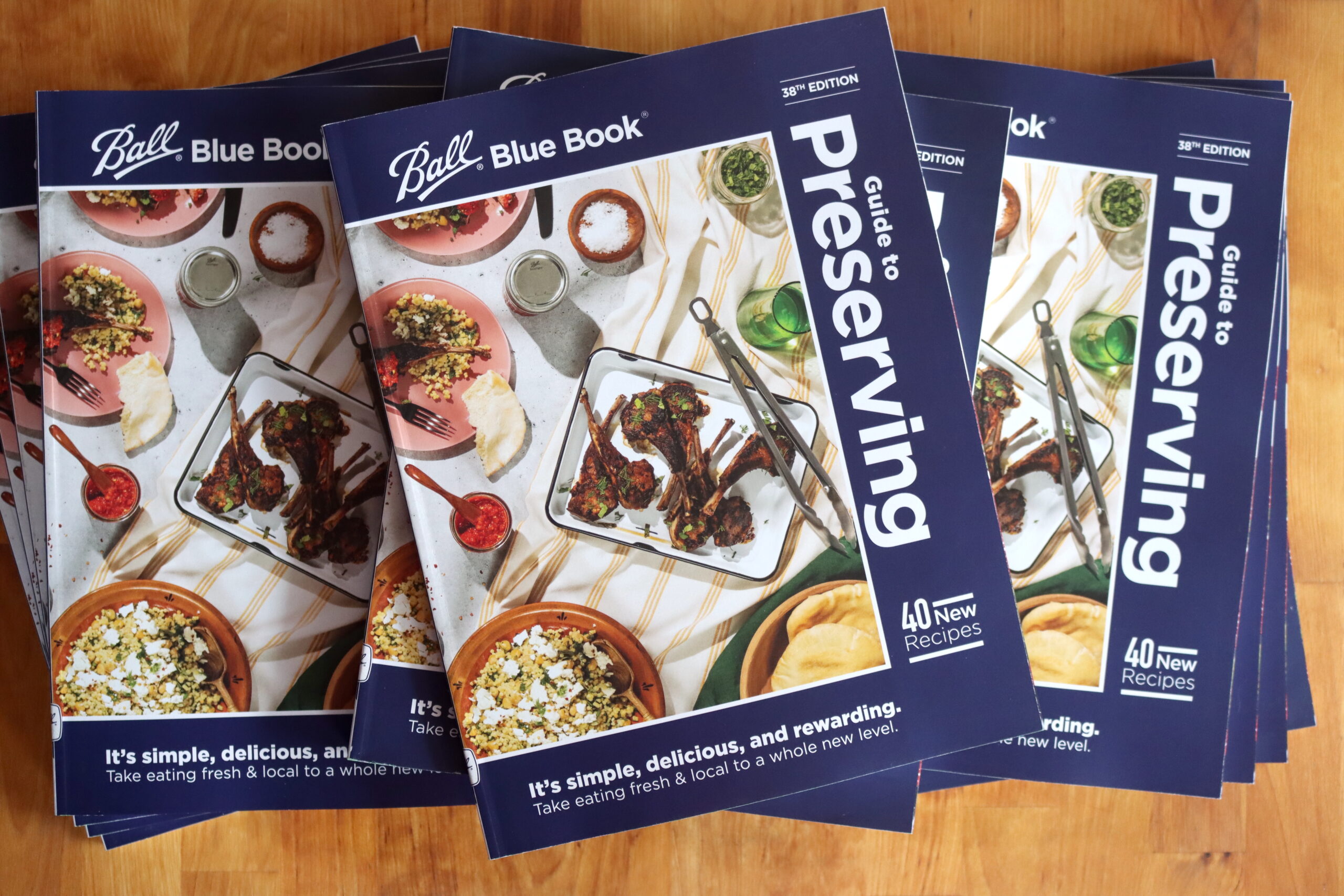
Ball Blue Book 38th Edition
Apple Recipe Changes
Here are the apple recipes that have changed:
- The basic apple canning recipe now contains ½ cup lemon juice for a 6-pint batch.
- Apples for baking is now called Apple rings, and the recipe increased the lemon from 1 Tbsp to 1/2 cup. They also increased the sugar from 1 cup to 4 cups, and lowered the yield to 3 quarts instead of 4. This is going to be almost candied fruit, and a title of “candied apple rings” might have been better.
- Applesauce now 3 T lemon for a 6 pint batch.
- Apple juice recipe added 3 Tbsp lemon juice per 6 pint batch.
- Apple Fruit Puree recipe added 1 T bottled lemon juice for each quart of pureed apples. (Or 1/2 Tbsp per pint, the same as applesauce.)
- Both apple butter and sweet cider apple butter now have an added ¼ cup of lemon juice.
- Apple Jelly now has an added 2 Tbsp lemon juice to 4 cups juice for a 4 half-pint batch.
- Apple preserves increased lemon to 2 Tbsp (from one) and specified bottled rather than fresh.
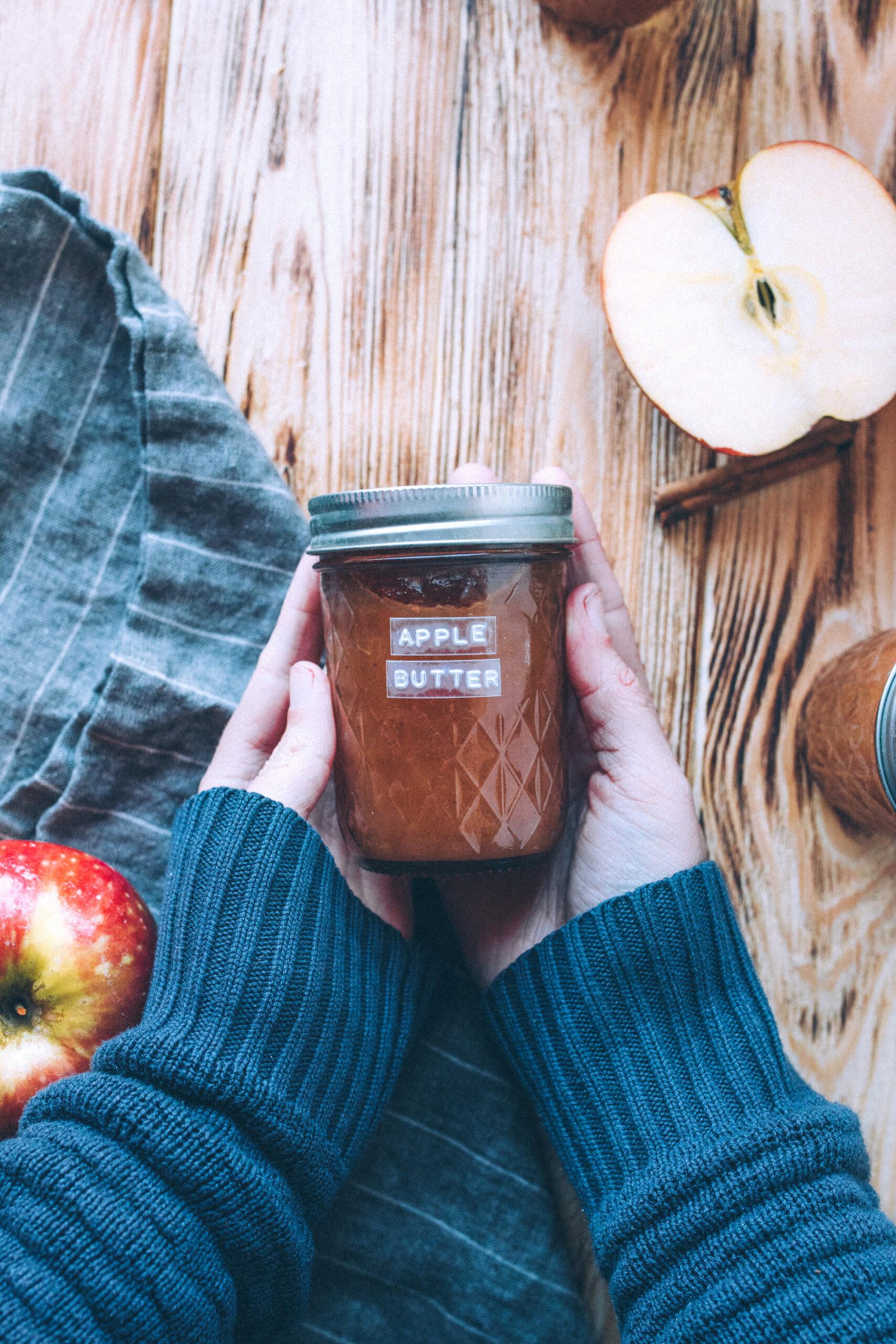
Elderberry Recipe Changes
Beyond the added acidity for apples, they’ve also removed elderberry canning recipes. There is new research that elderberries are too high in pH for canning (over a pH of 5 on average). There are some tested recipes for canning elderberry jelly and elderberry jam, and the Wisconsin State Extension service recently put these out.
Still, it looks like Ball Canning removed all elderberry recipes from the book rather than updating them.
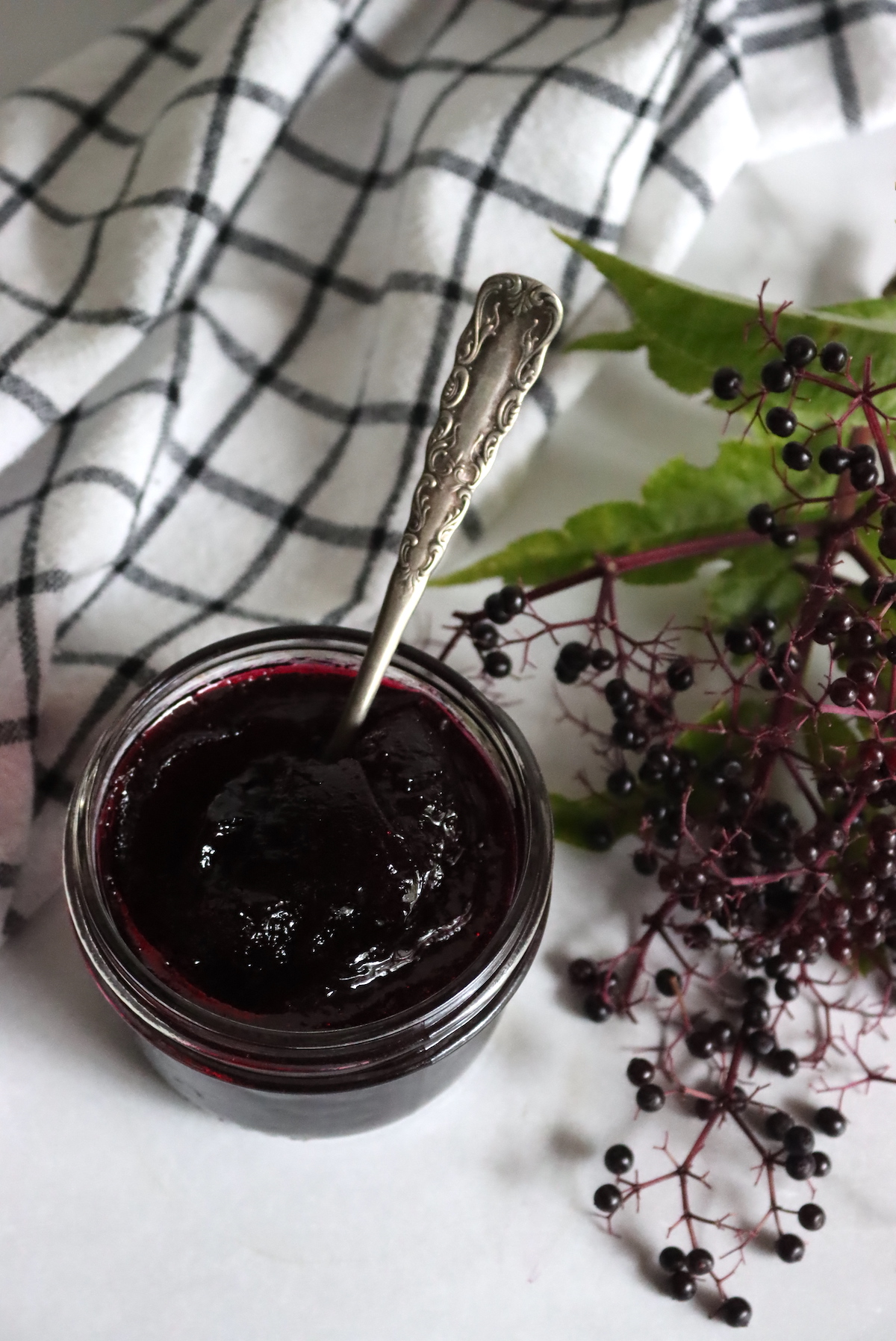
Elderberry Jelly
Fig Recipe Changes
In the fruit puree section, they added an option for a Fig Fruit Puree that wasn’t previously included. If canning pureed figs, you need to add 2 Tbsp bottled lemon or ½ tsp citric acid for each quart, and then process the jars as you would any other fruit puree.
This is actually a really nice change, as many people hesitate to when canning whole figs because they sometimes have bugs inside. Now, you can cut them open and inspect them before making a puree instead.
Beyond that, Fig preserves changed from one lemon to 3 Tbsp bottled lemon juice, plus sliced lemon peel.

Canning Figs
White Peaches and Nectarines
Most canning guides already have notes about not using white-fleshed peaches and nectarines, and the new edition added this guidance to all peach and nectarine recipes.
The new white-fleshed varieties are less acidic than normal “yellow” peaches or nectarines and have a milder flavor. With less acidity, they’re not acidic enough for canning, and testing hasn’t yet happened to determine how much added acidity would be necessary for canning them.
Currently, they’re just excluded from canning recipes until that research happens.
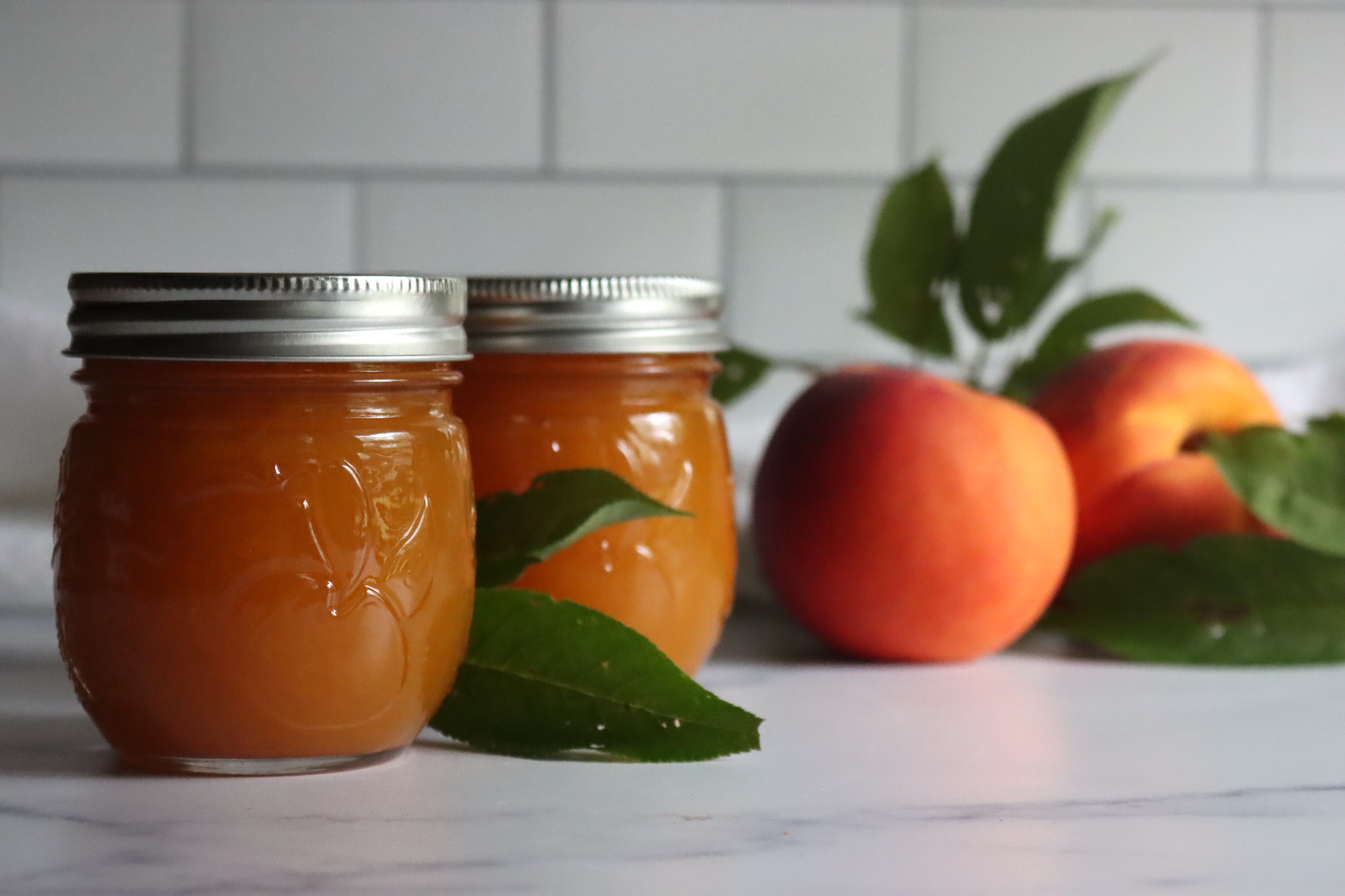
Peach Butter
Lemon and Lime Juice
Previously, many recipes included the option for either “Fresh or Bottled Lemon/Lime Juice,” and those were recipes where the citrus juice was used for flavor rather than preservation. In recipes where it was strictkly required for preservation, it specified bottled.
Now, all of those have been updated to say “bottled lemon/lime juice.”
While it makes things consistent in some ways, it’s confusing in that it will make canners assume that the juice is required for preservation.
For example, in their blueberry lime jam, you could omit the lime altogether and just have a blueberry jam. It’s not required for preservation, but it’s just in there as a flavoring agent.
The same is true in many of their salsa recipes, which have all been changed to only bottled citrus.
Using fresh citrus in canning recipes results in a much better-finished flavor, and though bottled does have a standard acidity, it is truly only necessary to sacrifice flavor for that standard when the citrus is needed to lower the pH.
Personally, I’m disappointed in this change, and I can see it causing a lot of unnecessary battles in canning discussion groups in the future.

Bottled Lemon Juice is used in Lemon Curd, where the NCHFP specifically requires bottled rather than fresh for preservation. Unfortunately, given that the recipe also calls for lemon zest, you can use leftover fresh lemon juice for canning plain lemon juice or canning lemonade.
Tomato and Salsa Changes
Most of the salsa recipes didn’t change beyond the specification of bottled lime juice.
One salsa recipe, however, now has quite a bit more acidity.
In the Jalapeno Salsa Recipe, the total amount of vinegar went from ½ cup vinegar to 1 cup vinegar.
The recipe for Yellow Tomato Butter also changed from no added acidity, to adding 2T bottled lemon juice or ½ tsp citric acid to a batch. That’s consistent with the other tomato acidification requirements outlined in the book, and just corrects an old error.
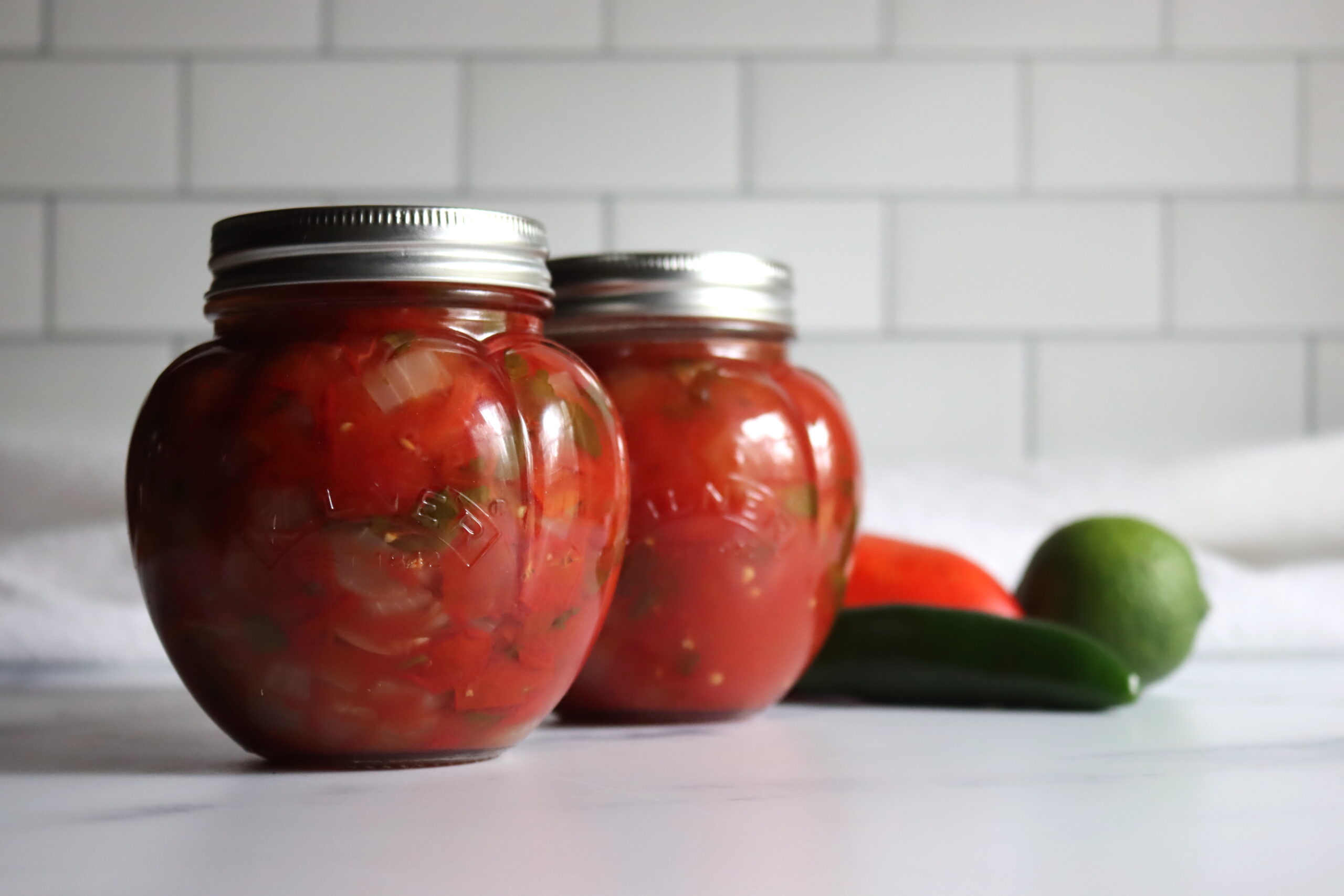
Jalapeno Salsa Recipe for Canning
Corrected Errors
In other places, the changes are very minor, and just correct obvious errors. For example, on the Tomato Paste Recipe, the original had 4 1/2 Tbsp of lemon juice for a 8 half pint batch…but then told you to add 1/2 Tbsp per jar. The recipe is now 4 Tbsp.
They did not, however, correct a number of known errors in batch yields that have been frustrating to home canners for years. Most of the batch yields remain the same, carried over from one book to the next.
List of New Recipes in the 38th Edition of the Ball Blue Book
There are quite a few new recipes in the 38th edition of the Ball Blue Book of Preserving. Some of these are completely new, and others are included in other Ball Canning Books. Several are in The All New Ball Book of Canning and Preserving (2016).
All the new recipes in the 38th edition include:
Canning Ingredients
- Pickling Spice (homemade spice mix)
Sauces
- Smokey Sweet BBQ Sauce
- Caponata Sauce
- Harissa Sauce
- Sweet Pineapple Chili Sauce
Jams and Savory Spreads
- Ajvar (Roasted Eggplant and Pepper Spread)
- Blueberry Lavender Jam
- Blueberry Honey Vanilla Jam
- Cherry Vanilla Jam
- Mango Jalapeno Peper Jelly
- Peach Toasted Almond Jam
- Red Onion and Port Jam
- Spiced Tomato Jam
- Strawberry Basil Jam
- Strawberry Honey Butter
- Sweet and Sour Pineapple Jam
Salsas
- Pineapple Mango Habanero Salsa
- Roasted Poblano Salsa
Syrups
- Hibiscus Tea Syrup
- Peach Concentrate (spiced peach syrup)
Pickles and Condiments
- Escabeche (mixed veg pickles)
- Maple Pickled Jalapenos
- Sweet and Sour Onion Relish
Pie Filling
- Apple Cranberry Pie Filling (with clear jel)
Freezing
- Raspberry Lemon Curd (Freezer only recipe)
Meal Creations (Using Preserves)
- Caponata Pasta Salad
- Greek Salad with Marinated Feta and Caper Lemon Vinaigrette
- Overnight Oat Parfait with Peach Toasted Almond Jam
- Pan Fried Harissa Lamb Chops with Herbed Couscous
- Sweet and Sour Pineapple Chicken Sheet Pan Bake
- Baked Brie with Cran-Orange Pear Jam
Desserts (in Ball Jars)
- Oatmeal Cherry Chocolate Chunk Cookie Gift Jars
Extras (Not preserves, For Fresh Use)
- BBQ Dry Rub Spice Mix
- Caper Lemon Vinaigrette
- Crostini with Hickory Smoked Ham and Red Chili Cherry Jam
- Honey Dijon White Wine Vinaigrette
- Hot Italian Giardiniera (fresh, not canning recipe)
- Marinated Feta
- Salty Pickled Edamame
- Tomato Chili Sambal
They say there are 40 new recipes in total…but I only found 39. If you see one that I missed in your book, please do let me know so I can add it to the list!
Recipes Removed
For the most part, they only added recipes rather than removing older recipes. There are a few exceptions, namely the elderberry jelly recipe and references to canning whole elderberries using the same instructions as you’d use for canning other berries.
They also removed a recipe for Apple Maple Jam, which is a shame! That’s a delicious recipe, and I’ll add it to the site here on Creative Canning in the near future so that it’s not lost forever.
What are you excited to make from the 38th Edition of the Ball Blue Book of Preserving? Leave me a note down in the comments.
(And don’t forget to enter the giveaway on Creative Canning’s Substack before May 1st, 2024! **Giveaway now closed**)
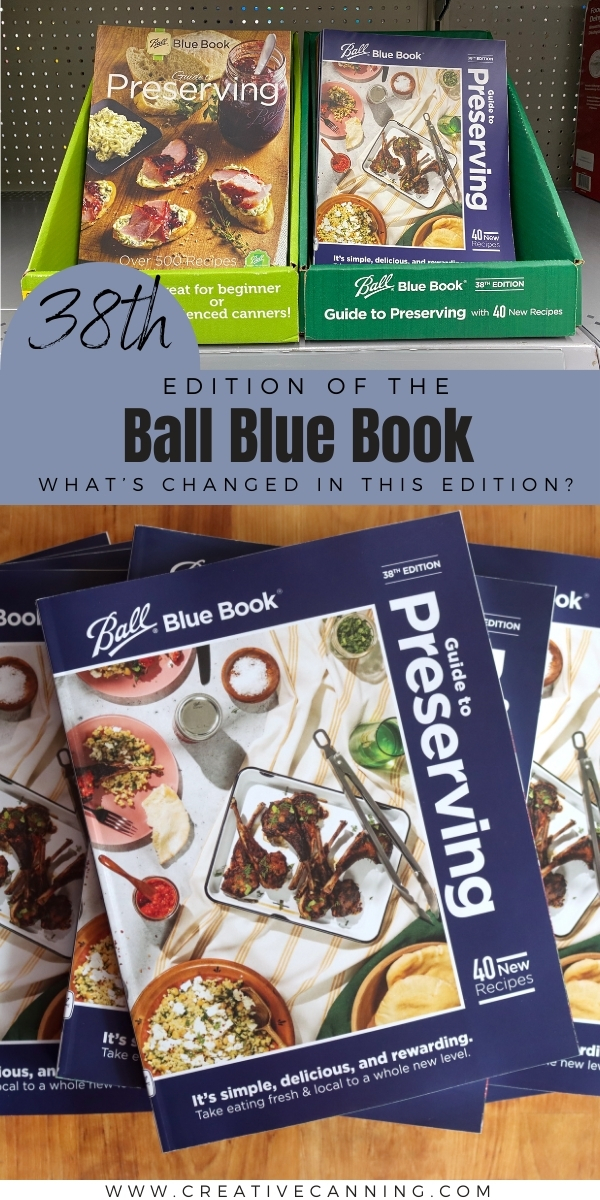
Ruth Morris
Hi Ashley,
I’m looking forward to trying the Oatmeal Cherry Chocolate Chunk Cookie Gift Jars recipe. I really enjoy reading your substack. My husband and I love to garden and can our produce, and we find great inspiration on your substack. Keep up the good work.
Ashley Adamant
Thank you Ruth!
Katie
Thank you for letting us know about these changes. I’m new to canning so this is helpful. My mom canned when we were kids , but I only felt the calling a few years ago to learn. Unfortunately she passed in 2017, so any questions I would have had for her, are left for me to find the answers to. I appreciate how you and the canning community are always willing to share what you know with others. So thank again!
Janetta Strieder
Sometimes for new canners it is so confusing to change things so often! I guess checking your own ph level is a must.
I’m looking forward to making the Maple pickled Jalapeños!!
Mary Coughlan
I’m excited to see the new recipes and I’m going to go through them one at a time and make them. AJVAR used to be unknown outside of middle eastern communities but I’d always buy it in my neighboring Armenian shops. That’s a recipe I’m excited to have. As far as the elderberry ones, I still have the old recipes for my giant elderberry bushes, but that is a mystery to me why they’d eliminate those.
Melinda Pollard
So I am new to canning and am looking into getting the ball blue book. I’m wondering if I should get both the 37th edition and the 38th edition. I’d hate to miss out on any good recipes from the 37th edition. Or are the recipes the same?
Ashley Adamant
The recipes are for the most part the same, they only removed their recipe for maple apple jam and the elderberry canning recipes. So only a few. And they added many new recipes.